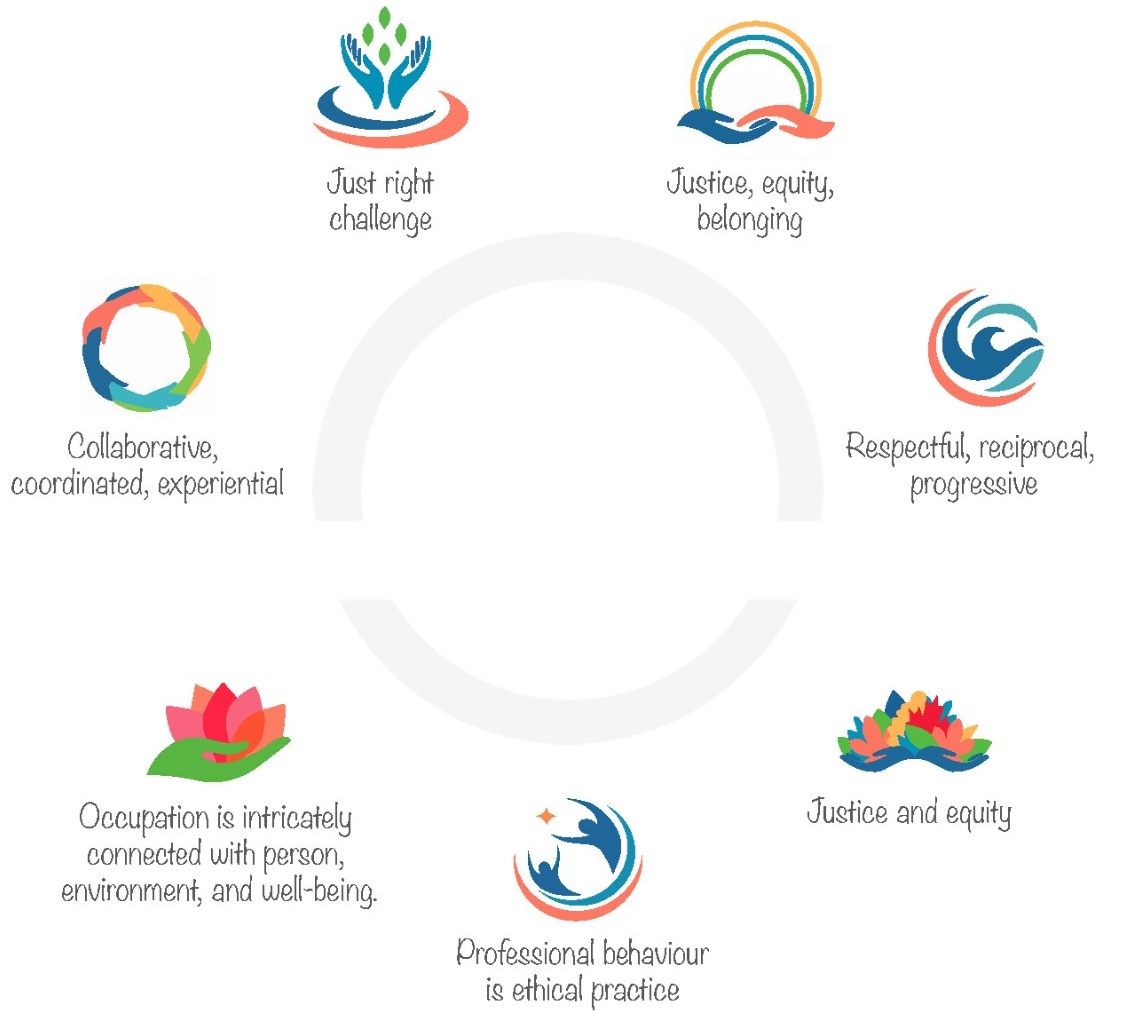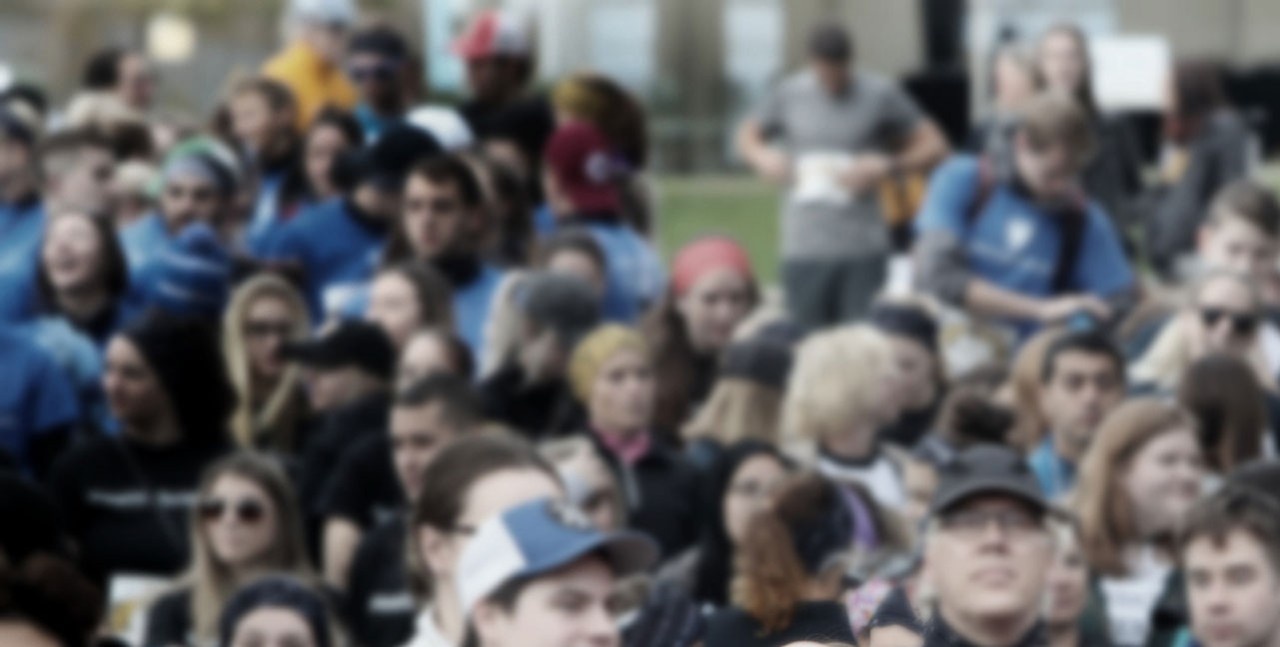Conceptual Frameworks
By Crystal Dieleman
Since the previous accreditation (2015) of the School of Occupational Therapy’s MScOT entry-to-practice program, our understanding of professional and educational concepts has evolved. Through the organic experience of educating students, engaging in research and scholarship, working through challenges, and establishing new strategic priorities, we have refined our understanding of professional and educational concepts.
In January 2020, we began the formal process of revising our conceptual frameworks by revisiting the previous frameworks, reflecting on which foundations have or have not held over time, removing outdated ideas, and streamlining the concepts to remove repetition and redundancies. While the process was interrupted by onset of the pandemic, we returned to it in the fall of 2020 where further reflection and discussion again refined existing ideas and introduced new ideas that had been integrated into our professional and educational understanding in recent years.
The current professional and educational conceptual frameworks were approved by School Council on January 27, 2021. This iteration reflects the ‘things that matter to us’ as we’ve discussed over the years and is, therefore, a reflection of our ongoing thoughts and actions as well as being aspirational for the directions we want to grow and improve into the future.
The educational and professional conceptual frameworks capture the values, beliefs, assumptions, knowledge and approaches used to guide the School’s entry-to-practice educational program. The educational conceptual framework includes our commitment to four core concepts: 1) collaborative, coordinated, experiential; 2) respectful, reciprocal, progressive; 3) just right challenge; and 4) justice, equity, belonging. The professional conceptual framework includes our commitment to three core concepts: 1) occupation is intricately connected with person, environment and well-being; 2) professional behaviour is ethical practice; and 3) justice and equity.

The Meaning Behind the Imagery.
A group of School faculty, staff and students came together to discuss what type of imagery would best represent each core conceptual framework concept. The images and descriptive meanings emerged from this collaboration.
| Professional Conceptual Framework |
|---|
| Occupation is intricately connected with person, environment, and well being: The hand symbolizes strength, power and protection, as well as generosity, hospitality and stability – providing a fitting symbol for occupation. The hand holds the seeds of future values, communities, cultures. The seeds overlap to show the intricacies and connections between occupation and abilities, cultural values, expectations. Those seeds are sown in the environment of historical, political, economic and social context, eventually shaping those very contexts. The seed shapes form a flower to symbolize the intricacies that contribute to diverse understandings and experiences of human occupation. |
| Professional behaviour is ethical practice: Critical reflexivity is paramount to achieve the highest professional behaviour and ethical standards in practice. The icon symbolizes reflexivity, self and epistemic, reaching towards the highest standard – the star – while recognizing diverse ways to achieve excellence. The two figures represent the mutual accountability that marks professional behaviour, moving the profession forward, changing fluidly, as symbolized by the blue water. The orange symbolizes earth – the solid foundation of ethical standards. |
| Justice and equity: The hands support the imagery of openness and belonging where occupational therapists work in solidarity with people and communities to address the occupational barriers experienced by those facing social injustices. The hands are perfectly balanced to symbolize equity and fairness. The varied color, size and types of leaves signify valuing diverse social and cultural realities. |
| Educational Conceptual Framework |
| Collaborative, coordinated, experiential: The hand symbolism of occupation references “All hands” – valuing contributions from all individuals in a group, from internal (faculty, students, staff) and external partners (preceptors, tutors, community members). This icon shows the interweaving of skills and knowledge throughout the curriculum, the interprofessional engagement, the valuing of knowledge and expertise and the hands-on experiential learning. The ring shape with the overlay of hand on forearm represents curricular strength through coordination and integration of knowledge, learning, reflection, analysis and delivery. The various colors symbolize critical thinking in unison to achieve the collaborative outcome. The circle symbolizes commitment and community and the necessity of a never-ending cycle of “all hands” working toward identified goals. |
| Respectful, reciprocal, progressive: The relationships among students, faculty and community are shown in the coming together or merging of the waters shown in blue. The waves show energy in the water – the fluid power of coming together respectfully and reciprocally, progressing confidently toward new visions and new ways of thinking. These waves also represent the tensions associated with transformative learning in practice-oriented professions, and the dynamic energy of learning through and from each other respecting experiences and social locations. The arc of the earth, represented in orange, shows the fundamental support of the larger Occupational Therapy community. |
| Just right challenge: An intellectually rigorous curriculum provides students with a solid foundation of high academic and performance standards, represented by the orange of the earth. The curriculum also shows fluid and flexible forms of teaching and evaluation to meet the needs of diverse learners (and educators) shown in blue as water. The seeds symbolize the potential for growth when mistakes, challenges and difficult learnings are met with efforts to exceed current abilities. The hands symbolize nurturing the conditions for that growth – sometimes support, and sometimes difficult self-confrontation. The orange and blue that form the image base symbolize earth and water – representing foundational practice skills and the fluidity of ever-evolving knowledge and learning. |
| Justice, equity, belonging: Integrated through the curriculum are the goals of inclusion, belonging, justice and equity, depicted in this image as hands connecting, working together. The ebb and flow of land and sea, orange and blue, symbolizes intricate, changing relationships. The hands also represent work to be done. A new vision for occupational therapy – one that centers justice, equity, inclusion and belonging – requires work to challenge and unlearn established ways of knowing, making space for alternative ways of knowing and practicing. The circle symbolizes wholeness, connection and evolution. |
A detailed summary of these evidence-informed conceptual frameworks can be found here. [PDF1.9MB]
